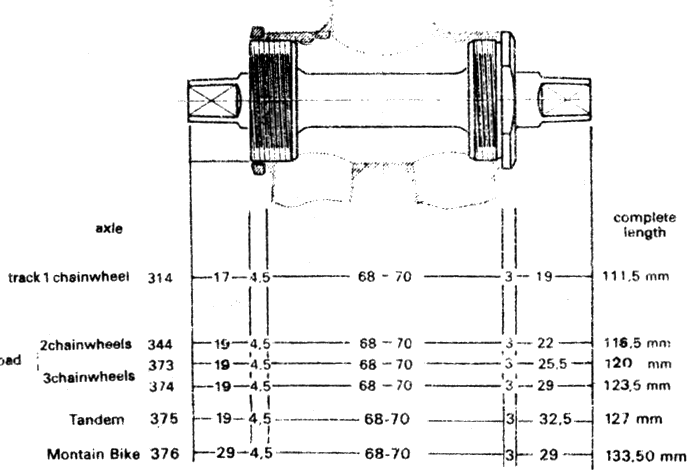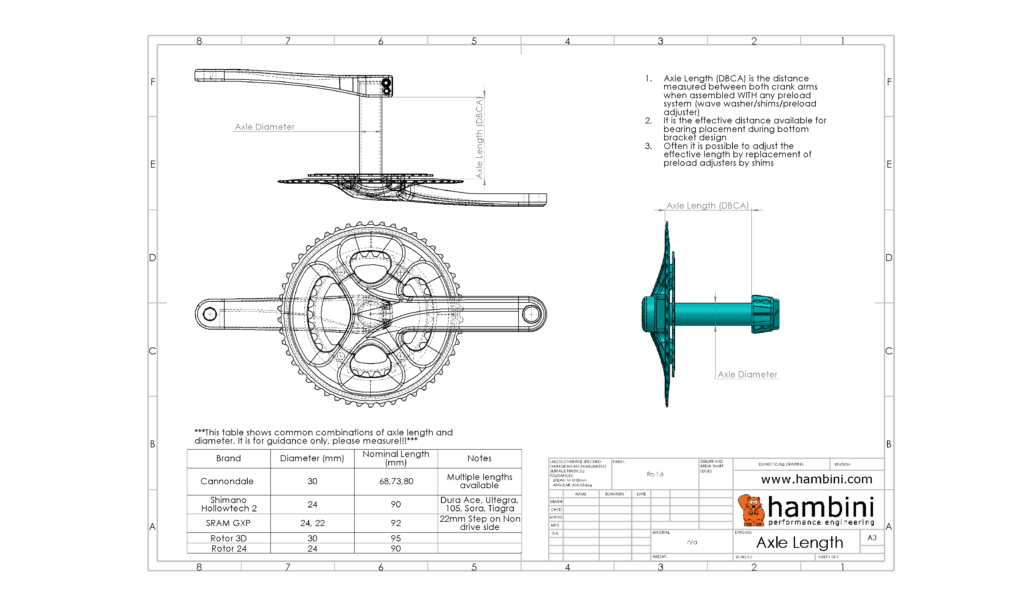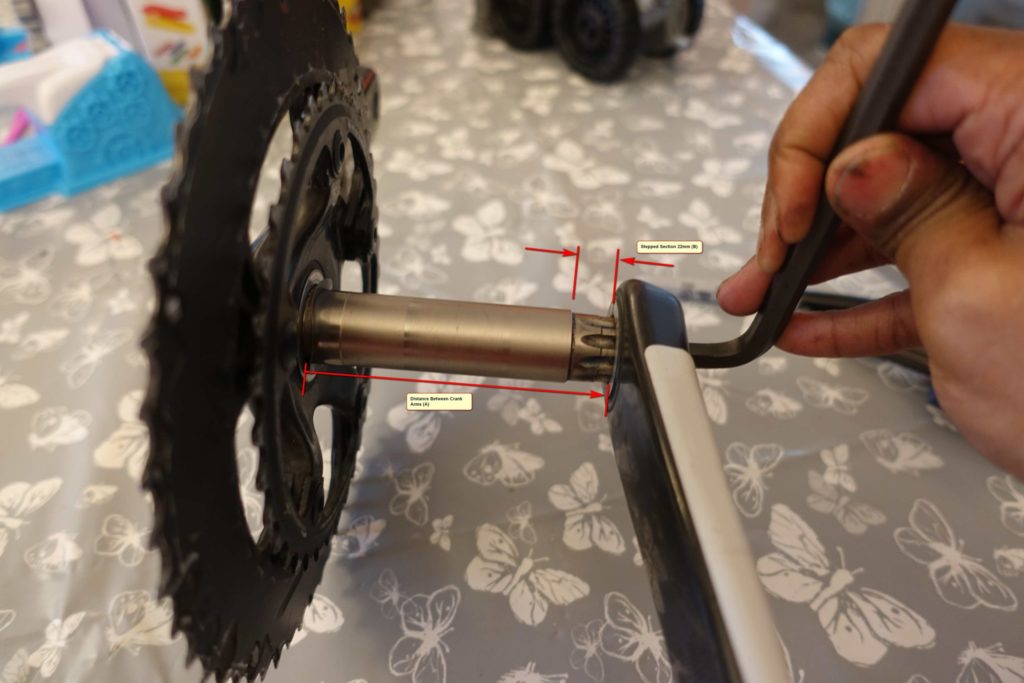Bottom Bracket DBCA, BB30 Short Axle, BB30 Long Axle Explained
Introduction
Distance between crank arms (DBCA) is the modern standard for specifying bottom bracket bearing spacing, it replaces axle length which was a legacy from when most bottom brackets included a square taper for the crank arms to attach to. Modern bottom brackets have the bearings break the integration between the axle, housings and bearings.
As an example. the modern Shimano Hollowtech 2 standard uses bearings with an interference fit on the bike side of the interface. The axle is a clearance fit into those bearings and the system is unified by means of a preload adjuster to take the “slack” from the bearings.
Measuring Bottom Bracket DBCA (Distance between Crank Arms)
The usable axle length is the distance between crank arms (DBCA). It is the gap that exists between the two arms when the assembly is bolted up with any preload system (this is crucial), preload collars will inevitably reduce the DBCA. The spindle length is an irrelevant measurement because differing cranks arms will consume differing amounts of axial real estate thus making the usable length shorter or longer.
A diagram showing the original spindle length derivations is shown below. The older bottom brackets had fixed bearing to spindle positions, modern units float and the axle position is movable to a degree.

In the case of Shimano Hollowtech 2 the DBCA is 90.5mm. This determines the bearing spacing (some people call this the bearing stance) which has a huge implication for the crankset stiffness. In real world terms, a wider bearing spacing has a near cubic relationship to crank stiffness. ie if the bearing spacing is doubled, the system stiffness increases by a factor of almost 8 (23). Short axle lengths are also a poor choice for maintaining reasonable alignment.
For Shimano this is a straight forward measurement and all of their road specific cranksets follow the same geometric standard hence a Dura Ace or a Sora will have the same DBCA.
The photograph below shows DBCA measured on a SRAM GXP axle.
30mm Cranksets (BB30, BB30A, BB386)
This becomes complicated in the case of other crankset systems and most notably those that use 30mm axles. At their inception, BB30 and BB386 were actually bottom bracket standards but in modern times, they have been used to refer to crankset standards eg you can purchase a bike frame which has a BB30 bottom bracket, you can also purchase a BB30 crankset, the two may not fit together. This causes confusion.
The 30mm axle diameter is obvious and easy to measure. The axle length or DBCA varies between manufacturers and even within manufacturers product lines.
Originally BB30 axles were designed with only a 68mm DBCA, this was marketed as “enhancing heel clearance”. After a few years, this practice largely died out and most new axles came out with a DBCA of somewhere around 90mm.
When selecting a bottom bracket, you should always select the WIDEST bottom bracket to fit the crankset DBCA. Here are some examples
Example 1 – Rotor 30mm Inpower Crankset
Crankset DBCA 93mm. The bike frame is a Focus Izalco with a 68mm PF30 Bottom bracket
A 30mm bottom bracket suitable for a long axle would be recommended in this case. The Rotor crankset has a 93mm DBCA. A 30mm Long Axle PF30 Bottom Bracket has a 90.5mm minimum DBCA and hence this word work with a few shims.
An alternative would be to use a 68mm (Short Length) bottom bracket, this would work but it would have a narrow bearing stance and require extensive spacers on both sides. This would be a poor choice.
Example 2 – Cannondale Spider Crankset
Crankset 73mm DBCA. The Bike frame is a Focus Izalco with a 68mm PF30 Bottom Bracket
In this scenario the DBCA is 73mm, the only bottom bracket that would be a short length 68mm PF30 bottom bracket. This would require 2.5mm of shims on either side as a minimum.


